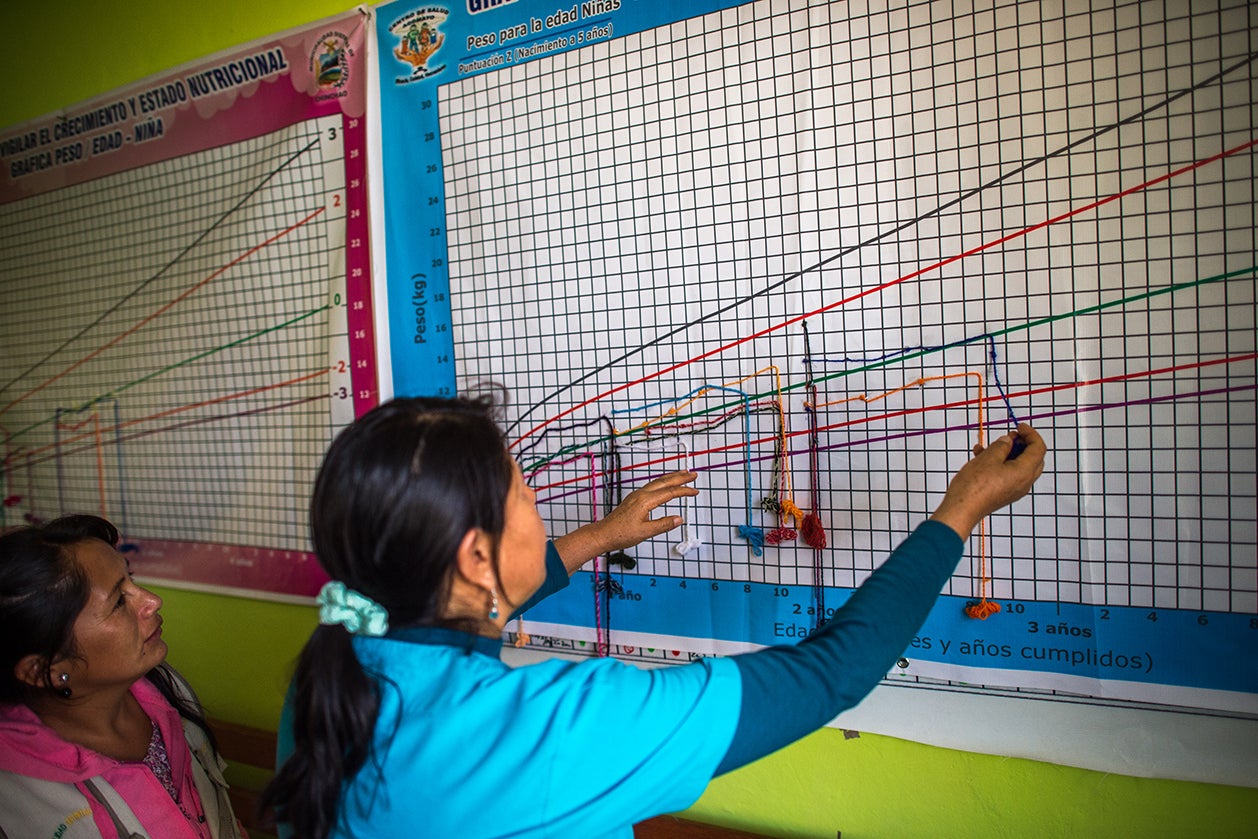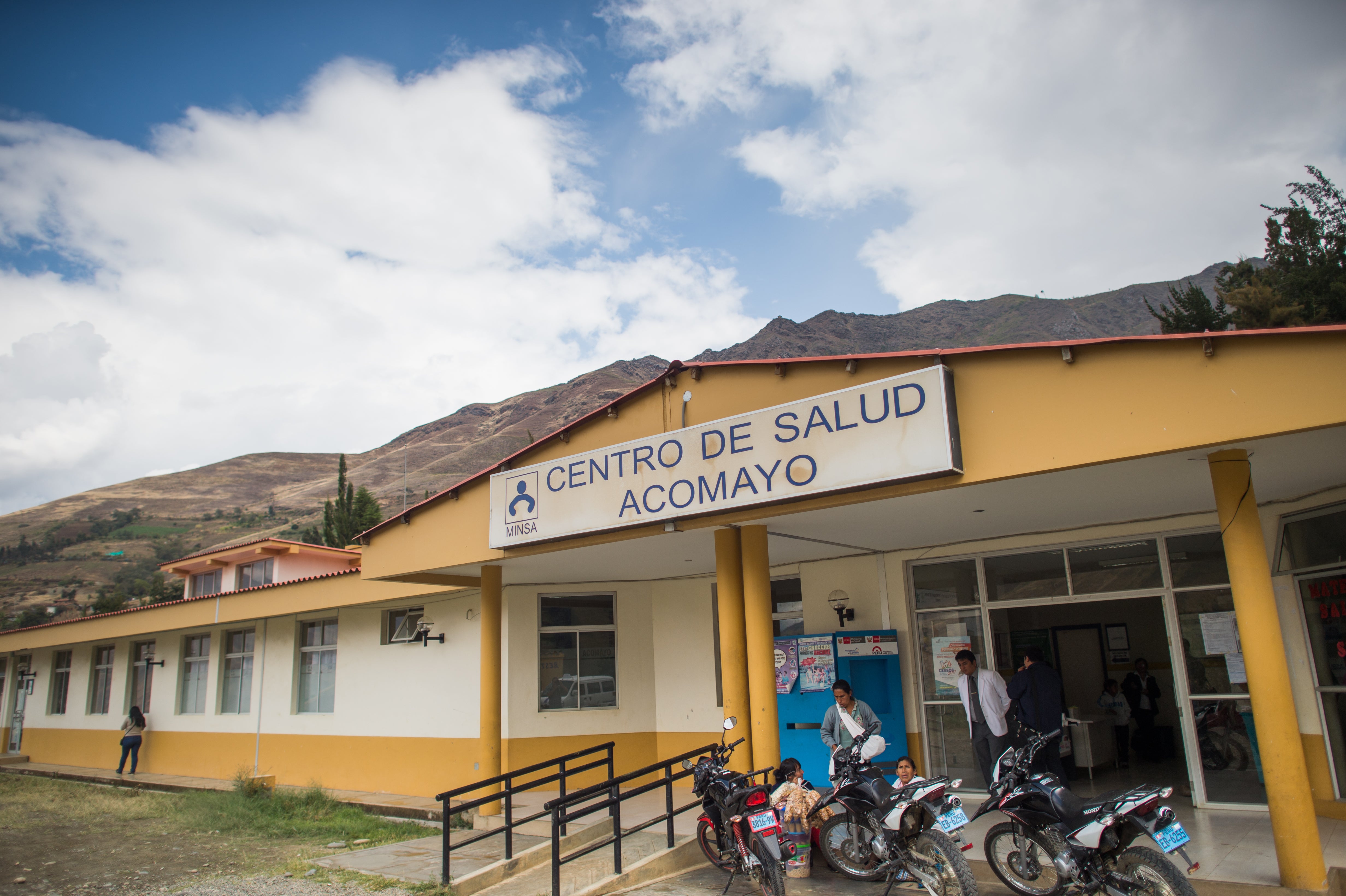- Peru’s success in reducing mortality among children under the age of five was the result of the government setting clear national priorities for health and its willingness to monitor outcomes and adapt accordingly.
- Four primary factors undergird Peru’s status as an Exemplar: (1) community-level engagement, (2) an emphasis on equity, (3) an ability to establish clear national health priorities that could guide the actions of partners, and (4) innovative approaches based on local research, to meet the health needs of a large and highly diverse country.
Below are some specific approaches that proved especially effective:
Engaging at the Community Level
Peru’s emphasis on community health care has roots stretching back over a century. Due to the inherent difficulty of providing health care across the country’s mountainous and heavily forested rural areas, the physician Manuel Núñez Butrón began training community residents and traditional healers in preventive medicine in the early 1900s. These efforts represented the beginning of the concept of community health workers (CHWs) in Peru.
In the 1990s, community-health agents (volunteers) (known as promotores de salud or health promoters in Peru) began taking on significant roles in the country’s malaria control program. These CHWs were trained to perform selected activities across a range of local health issues.
As a general rule, community members selected their own promotores. In some regions (especially in the Andes), this resulted in primarily male promotor cadres, since men were traditionally seen as community leaders. However, over time the promotores and other community health networks have become increasingly female in their composition.
The promotores or promotoras (female version) have played a crucial role in the promotion of health at the community level across Peru, including interventions to reduce mortality among children under the age of five (U5M). For more details on how they did this, see the section on community-based Integrated Management of Childhood Illness in the chapter.

Making Equity a Priority
Peru’s government and civic sector made commitments early in the study period to reduce extreme poverty. The 2001 Roundtable for the Fight Against Poverty and the resulting 2002 National Agreement enshrined this commitment, which was reflected in the country’s decision to implement evidence-based interventions to reduce U5M.
For example, Peru selected low-income or otherwise high-risk areas for the rollout of several vaccinations, including rotavirus vaccine, pneumococcal conjugate vaccine, and Hib vaccine. In addition, the government and its partners placed crucial health infrastructure in rural, largely poor areas that lacked hospitals and health centers. As a result of these and other pro-equity measures, improvements occurred across all wealth quintiles in the country – and the equity gap between these quintiles narrowed impressively – for both U5M and neonatal mortality.
Another measure that helped improve equity in Peru was the Juntos conditional cash transfer program (see more detail in the chapter). Juntos was started in 2005, with the long-term goal of ending inter-generational transmission of poverty, by improving access to health services and education. In order to receive the cash transfer, families were required to seek basic routine health care visits and primary education for children. The cash transfers were originally focused on poor families with children under the age of 14, but by 2010, the program broadened its scope to include all low-income households. In addition, Juntos aimed to reduce other equity gaps beyond income inequity, through aiming to reach households with lower women's literacy levels, lack of access to appliances and fuel sources, and lower availability of public services.
Indeed, Juntos and other anti-poverty initiatives helped to improve equity in Peru. The population living below the poverty line substantially declined, and health outcome inequities related to income and geography narrowed substantially.
Establishing Clear National Health Priorities
During the 2000–2015 study period, the Peruvian government established clear maternal health and child health priorities, and ensured that the goals of partners were congruent with these, thereby increasing the resources available for addressing U5M.
One specific example of how the government worked closely with nongovernmental organizations and international health agencies was the Neonatal Health Collective, which pooled resources and expertise with the specific aim of meeting Millennium Development Goal 4, the reduction of child mortality. This initiative – which helped generate the Technical Health Standard and epidemiological surveillance programs – began as a collaboration among neonatal and child health professionals, but expanded to include representatives from the Ministry of Health (MOH), cooperation agencies (e.g., Pan American Health Organization, the United Nations Children’s Fund, and the United States Agency for International Development), and others.,,
Peru also took advantage of regional efforts to reduce U5M. “In the Americas region, we had a goal that the IMCI [Integrated Management of Childhood Illness] could reduce 100,000 under-five deaths,” an interviewee said. “Since that goal was political, it mobilized a lot of resources.” Some examples cited by this interviewee included a major community-based IMCI project with the Peruvian Red Cross, as well as financial support for IMCI from the World Bank, the United States Agency for International Development, and the Inter-American Development Bank.
Implementing innovative approaches based on local research
Peru developed innovative approaches to U5M research, conducting local studies to identify interventions that might suit specific communities. It also sought to identify effective interventions from around the world that might be applicable to Peru’s unique sociopolitical and cultural context.

This incorporation of research and evidence-based interventions into policy and implementation of actions led to increases in intervention coverage, particularly with regard to antenatal and delivery services – health topics that touched on deep cultural sensitivities.
“Knowing what you're going to do is about working on programs based on scientific evidence, not doing just what occurs to someone to do,” one interviewee explained. “There is a lot of folklore in the country, and part of knowing what to do means having run experiments under certain conditions.”
Researchers and health professionals at the MOH developed culturally sensitive strategies to approaching maternal and child health issues, including facility-based childbirth. Protocols were developed and trainings were held on culturally relevant birthing practices, which contributed to increased facility-based delivery in rural areas.
In certain respects, traditional cultural practice informed and improved modern medical approaches, rather than the other way around.
One intergovernmental official mentioned the example of vertical child delivery – the practice of giving birth in an upright or squatting position. “This is what was done historically, pre-Hispanic, and is physiologically better and right,” the official said. “We did about eight [training] interventions for all health care services, and of course that was not easy, because they never taught this in universities.”
